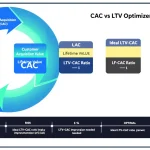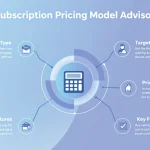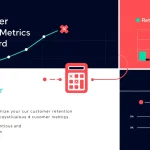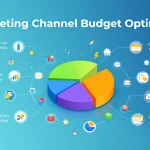Is this tool helpful?
How to Use the Subscription Pricing Model Optimizer Effectively
Step 1: Describe Your Current Subscription Pricing Model
Provide a clear overview of your active pricing tiers, their pricing, and included features. Examples you can use:
- Basic Plan ($29/month): Includes core features, email support, and access for 3 users.
- Pro Plan ($99/month): Adds advanced analytics, phone support, and 20 user licenses.
Step 2: Input Your Monthly Revenue
Enter your average monthly revenue generated from all subscription tiers combined. Example inputs:
- Monthly revenue: $75,000
- Monthly revenue: $123,500
Step 3: Provide Current Monthly Churn Rate Percentage
Input your current monthly customer churn rate as a percentage. For instance:
- Starter Plan churn rate: 10.3%
- Enterprise Plan churn rate: 3.8%
Step 4: List the Main Reasons for Customer Churn
Share the primary causes why customers cancel. Examples include:
- Lack of key features
- Pricing perceived as too high
- Poor customer support response times
Step 5: Optional – Provide Competitor Pricing and Feature Details
Include information about competitor subscription models, pricing tiers, and features if available. This helps contextualize your strategy.
- Competitor A offers a tiered model with prices ranging from $35 to $120/month.
- Competitor B bundles premium support and integrations into one top-tier plan.
Understanding the Subscription Pricing Model Optimizer
The Subscription Pricing Model Optimizer helps you analyze your current subscription pricing strategy to reduce churn and boost customer retention. By entering key data about your pricing tiers, revenue, churn, and competitive environment, you gain insight into how your pricing aligns with customer value and market trends.
This tool evaluates your pricing model against critical factors such as customer segments, churn causes, and competitor positioning. It delivers actionable recommendations to optimize pricing, improve your value proposition, and increase customer lifetime value.
Key Features of the Pricing Model Optimizer
- Price-Value Alignment: Assesses how well your prices match the value customers perceive.
- Churn Pattern Analysis: Identifies which customer segments are most at risk and why.
- Competitive Evaluation: Reviews your pricing structure relative to competitors’ offerings.
- Revenue Optimization: Finds opportunities to increase subscription revenue without driving churn.
Practical Usage and Business Applications
Optimize Subscription Tiers
Use the optimizer’s recommendations to fine-tune your subscription plans. For example, you might:
- Introduce a mid-level plan to capture more customers
- Add annual billing options with discounts to improve cash flow and retention
- Adjust feature bundles to meet customer priorities
Identify and Address Churn Drivers
Analyze the churn reasons collected to create targeted retention strategies. For example:
- Improve customer onboarding to reduce early cancellations
- Adjust pricing or add promotional offers for price-sensitive segments
- Enhance support responsiveness for customers facing issues
Plan Competitive Pricing Moves
Use competitor pricing insights to adjust your positioning strategically:
- Match or beat competitors’ prices in key target markets
- Distinguish your offerings through value-added features
- Offer flexible plans to address gaps in competitor models
Mathematical Framework Behind the Optimizer
The tool applies standard subscription metrics to help you understand your business health and pricing impact. Key formulas include:
Customer Lifetime Value (CLV):
The average revenue you earn from a customer before they churn.
$$ CLV = ARPU \times \frac{1}{ChurnRate} $$Where: ARPU = Average Revenue Per User; ChurnRate expressed as a decimal (e.g., 0.05 for 5%).
Retention Rate (%):
The percentage of customers that remain subscribed each month.
$$ RetentionRate = (1 – ChurnRate) \times 100\% $$Monthly Recurring Revenue (MRR):
The total predictable income generated by subscribers every month.
$$ MRR = SubscriberCount \times AverageSubscriptionPrice $$Implementation Strategies for Pricing Optimization
1. Gradual Pricing Adjustments
Make incremental changes to avoid disrupting customers:
- Roll out new prices gradually
- Respect existing customer agreements with grandfathering
- Communicate changes clearly and early
2. Feature and Value Alignment
Match pricing tiers closely to customer needs and usage:
- Distribute features to maximize perceived value
- Add usage-based pricing for scalability
- Offer customizable add-ons
Frequently Asked Questions About Pricing Optimization
Which businesses benefit most from this pricing optimizer?
Subscription-based businesses across diverse industries see value, including:
- SaaS companies
- Online content platforms
- Membership-based services
- Professional and consulting services
How often should I review and adjust subscription pricing?
Regular evaluations keep pricing effective:
- Quarterly churn and revenue analysis
- Bi-annual competitor pricing checks
- Annual full pricing strategy reviews
What indicators show that my pricing strategy is successful?
Look for these signs after optimization:
- Lower customer churn rates
- Higher average customer lifetime value
- Improved customer satisfaction and retention
- Stronger new customer acquisition
Can this tool support pricing for new product launches?
Yes, it helps design initial pricing tiers, feature sets, and competitive positioning tailored to your target audience.
How does seasonality influence subscription pricing?
The optimizer helps you adjust for seasonal demand by analyzing:
- Historical seasonal sales trends
- Industry-specific market fluctuations
- Recommendations for seasonal promotions and pricing tiers
Why is customer feedback important for pricing optimization?
Direct feedback informs your pricing decisions by highlighting:
- Which features customers value the most
- Reasons behind cancellations
- Price sensitivity levels
- Expectations for service and support
Important Disclaimer
The calculations, results, and content provided by our tools are not guaranteed to be accurate, complete, or reliable. Users are responsible for verifying and interpreting the results. Our content and tools may contain errors, biases, or inconsistencies. Do not enter personal data, sensitive information, or personally identifiable information in our web forms or tools. Such data entry violates our terms of service and may result in unauthorized disclosure to third parties. We reserve the right to save inputs and outputs from our tools for the purposes of error debugging, bias identification, and performance improvement. External companies providing AI models used in our tools may also save and process data in accordance with their own policies. By using our tools, you consent to this data collection and processing. We reserve the right to limit the usage of our tools based on current usability factors.







